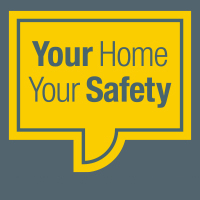Resident Management Companies (RMCs) in high-rise buildings
Resident Management Companies (RMCs) in high-rise buildings
This information is for residents of high-rise buildings in England managed by Resident Management Companies (RMCs). And those also under the Right to Manage scheme and commonhold associations.

Resident Management Companies (RMCs) work on behalf of leaseholders, who are shareholders in the company. Those living in the building often elect other residents to be RMC volunteer directors.
Any leaseholder can take part in RMC meetings and should have a say in decisions affecting their building’s safety and management.
As directors are volunteers, usually without technical or housing management expertise, many RMCs choose to enlist the help of managing agents.
RMCs and building safety
Building upon the framework of The Building Safety Act 2022, RMCs have specific duties to ensure the safety of residents in higher-risk buildings that fall within its scope.
This includes:
- Storage and maintenance of building information: All PAPs must keep a digital record of certain information about their building – how it was designed and built, how it may have changed and how it is maintained and managed.
This should include information on all aspects of fire and structural safety, evacuation, complaints and incidents.- The information may include documents, drawings, reports and other records. Collectively these form the ‘Golden Thread’ of information, or the ‘Safety Case’.
- Safety Case Reporting: All PAPs must prepare a ‘safety case report’ for their building, which identifies building safety risks (the risk of fire spread in the building and structural failure) and describes how they are being managed.
- The safety case report summarises the building safety information or ‘safety case’ for the high-rise residential building and shows the PAP is taking all reasonable steps to manage identified building safety risks.
- Engaging with residents: PAPs should engage with residents about safety issues. They must prepare a strategy that sets out how they will encourage residents to take part in making building safety decisions.
- The strategy will set out the information that will be provided to residents, what aspects they will be consulted on and how their views will be captured.
- Building safety decisions include decisions on the management of the building, the management of building safety risks and any decision connected to the duties of the AP.
Building safety for APs & PAPs – Resident Management Companies (RMCs), Right To Manage or commonhold webinar:

Information and documents that must be held and maintained by RMCs who are the PAP
Certain key information and documents are important in ensuring higher-risk buildings are properly managed, monitored and maintained for safety purposes and the areas of fire and structural risks.
This includes:
HRB Registration Data
You should store the most up to date:
- details of who the PAP is
- details on the kind of organisation the PAP is
- a brief description of the building
- details of the building certificate
Key Building Information
As part of the legal requirement to register higher-risk buildings with BSR, RMCs must provide and update as needed key information about the building:
- basic details about the building (location, use, height, number of storeys, staircase)
- the type of construction (materials, external wall insulation)
- information on energy supplies and energy storage
- fire and smoke control equipment
- the evacuation strategy for the building
Design and build information
- initial designs, plans and drawings
- details of applicable design codes
- details of applicable building standards
- details of the intent of how these would be applied
- built and current plans and drawings (with any subsequent changes)
Fire Safety management information
- the most recent fire risk assessment for the building
- a list of fire safety management measures for the building and their location
This does not include measures that have been provided by a resident for their own use.
A fire risk assessment is a report that identifies the fire safety hazards, assesses the risk from these and considers how they are or should be managed within the building.
Evacuation information
You should provide information about:
- your evacuation strategy
- the evacuation procedure
- what circumstances a person should evacuate
- any fire safety measures that might assist evacuation
Fire Safety Regulation information
This is information kept in the secure information box available to the fire and rescue services.
- contact details for persons responsible for the building.
- design and material information relating to the construction of external walls.
- floor plans for the building (including a simple one-page plan).
Structural Information
You should retain a statement, assessment or report showing:
- assurance that no further structural assessment is required
- a risk evaluation following structural assessments
- a list of structural safety measures that prevent or reduce structural safety risk
The Building Safety Risk Assessment
- the current report detailing assessment of building safety risks (i.e. spread of fire and smoke, and structural failure)
The Safety Case Report
This is a comprehensive document summarising the safety risks present in the building and the measures in place to mitigate those risks.
This report serves as:
- evidence that the building is being managed safely
- all reasonable steps have been taken to prevent building safety risks
- reduce severity if they did happen
Read more in BSR’s Safety Case toolkit – Reasonable steps and practical examples.
Details of the Safety Management System
The system for planning, organising, monitoring, controlling and reviewing the overall approach to managing building safety risks.
Details of equipment and devices for the purposes of building safety
You should retain:
- a list of all building safety measures
- records of inspection of building safety measures
- records of scheduled maintenance (where required)
- records of unplanned maintenance and repairs
Records of Building Work
You should retain:
- information provided in any application for a completion certificate
- any completion certificate issued
- information provided in any application for a partial completion certificate
- any partial completion certificate issued
- any building regulations compliance certificate issued for work done under a competent persons’ scheme
Mandatory Reporting Requirements
You should retain for a period of seven years:
- details of any incident reported to the Regulator
- details of the steps taken in relation to any incident
Complaints
You should retain for a period of seven years:
- details of any complaint received
- details of the steps taken in response to any complaint
- any involvement of the Regulator in any complaint
- the outcome of any complaint
The Resident Engagement Strategy
This is a document outlining how the PAP communicates and engages with residents on safety matters.
The strategy must take account of the individual audience found in each building, their communication preferences and the level to which they want to be involved. The strategy will set out how residents will be engaged in decisions about building safety related matters.
These matters include:
- management of building safety risks
- the management of the building in connection to any duty of an accountable person
Residents must be:
- consulted on the initial strategy and on subsequent revisions
- be involved in decision making in the way set out by the strategy
Evidence of consultation, engagement and meetings held with residents about building safety should be retained.
Resident engagement also includes provision of certain documents and information. This is the responsibility of each AP. Copies of this information should be retained.
Read our guidance setting out key considerations to help effectively engage with residents: BSR principles for engaging with residents
Information and documents that must be provided to residents by RMCs who are the PAP
The AP must take all reasonable steps to ensure that every person who is aged 16 or over and who lives in the part of the building for which that AP is responsible receives certain information or documents.
This includes:
- a summary of the current fire risk assessment
- a summary of the current safety case report
- information on how resident behaviour might prevent building safety risk materialising, or reducing the severity where it does
- information provided on:
- escape routes and fire doors etc
- other fire safety equipment
- smoke control equipment
- the use of safety related equipment
- evacuation
- information on relevant persons – including role, duties and contact details
- details of any nominated single point of contact for residents
- a copy of the current resident engagement strategy
- a list of the information that an AP should have provided
- a list of further information, that must be available on request
BSR support for Resident Management Companies
The Building Safety Regulator (BSR) can help RMCs meet their building safety responsibilities by providing useful information and resources, including:
- Building safety webinar for APs & PAPs – Resident Management Company, Right To Manage or commonhold webinar: for Resident Management Companies, Right To Manage or commonhold properties who are accountable persons and principal accountable persons.
- Common questions to BSR on resident engagement and managing high-rise buildings: answers to some of the common questions put to the Building Safety Regulator on resident engagement and managing high-rise residential buildings.
- BSR principles for engaging with residents: key considerations to help PAPs and APs engage effectively with residents.
- Information about the golden thread: the digital record of critical information about higher-risk buildings.
- Building Assessment Certificates (BACs): designed to be evidence for residents that their higher-risk building meets the highest safety standards.
- Building Assessment Certificates – residents’ guide: a useful guide for RMC residents about what a BAC is and isn’t
- Regular updates: through our BSR bulletins and residents’ e-newsletter.
Free online training for RMC directors
The Building Safety Regulator (BSR) and The Leasehold Advisory Service (LEASE) have launched a free online building safety training programme to equip thousands of resident-managed high-rises across England with essential building safety knowledge.
Access the free “Introduction to the Building Safety Act 2022 for Resident Directors” elearning
Train with the Building Safety Regulator
HSE’s ‘Introduction to the role of APs and PAPs’ online or in-person course explains main roles, responsibilities, individual and organisational capabilities.
Visit our training and services website for more information and to book your training course.

BSR support for residents
Everyone should be safe and feel safe in their own high-rise homes. For more information visit the ‘Your home, your safety’ page.

Support from other organisations
RMCs can access guidance resources to help in their building safety roles and responsibilities.
Key sources of useful guidance include:
- Managing safety risks in high-rise residential buildings: a detailed guide – GOV.UK
- Set up and run a flat management company – GOV.UK (www.gov.uk)
- Becoming a director or member of a residents’ management company – Companies House (blog.gov.uk)
- The Leasehold Advisory Service (LEASE): practical advice on leaseholder rights, management obligations and Section 20 consultations.
- The Property Institute (TPI): practical guidance on health and safety, managing property risks and the Building Safety Act compliance. Their website contains detailed guidance on topics like fire safety, handling residents’ meetings and working with contractors.